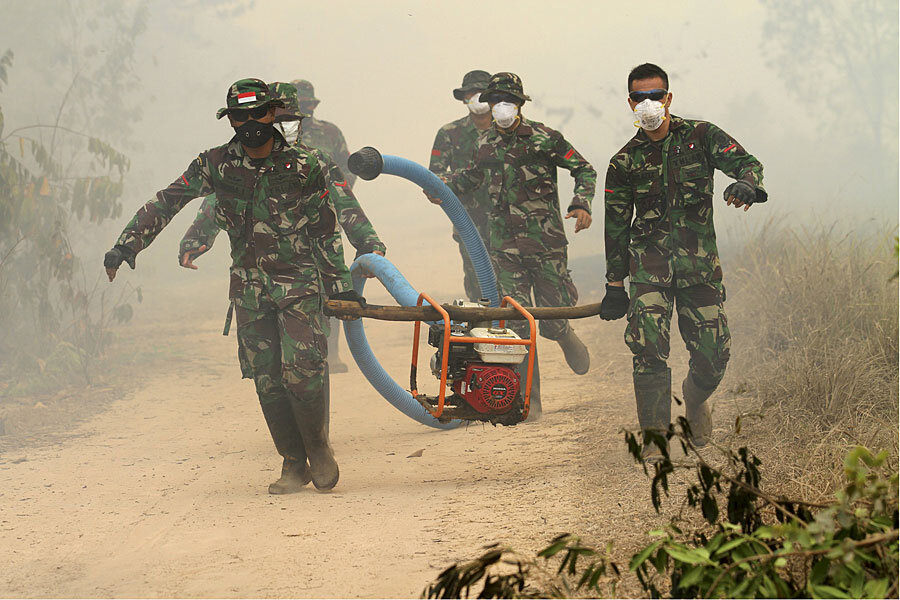Drone footage shows Indonesia’s cataclysmic forest fires
Loading...
Indonesia is battling its worst forest fires in nearly 20 years.
Wildlife is being devastated by the flames and smoke, creating vast amounts of pollution that could cause as many as 110,000 premature human deaths, says Greenpeace.
Drone footage captured by the environmental advocacy group shows endless acres of smoldering land, seemingly vacant of any life.
The fires, for the most part, are intentionally and illegally started using "slash and burn" deforestation techniques to feed the paper and palm oil industry, the Guardian reports. El Nino climate conditions have further increased fire risk in a region that has already been facing years of drought. Indonesia is using water bombers on the affected areas and artificial chemicals to cause rainfall.
The impact of such fires is wide-ranging, being felt well beyond the loss of vegetation and wildlife, as devastating as that is. Plants and trees absorb carbon dioxide, so when they burn, all of that CO2 is released back into the atmosphere. Indonesian peat swamp forests are a crucial carbon sink containing 60 gigatons of carbon, which if entirely burnt would equate to six years of global fossil fuel emissions, according to Greenpeace. The organization notes that in 1997, when Indonesia faced a similar crisis, pollution from the fires equated to “between 13 and 40% of global carbon emissions from fossil fuels.” The pollution now is on track to match the total yearly emissions output of the United Kingdom.
Environmental concerns about the region were significant even before the fires started burning. A study published by the journal Nature Climate Change last year shows the rate of deforestation in the region is almost double that of the Amazon.
And now the neighbors are starting to complain: Malaysia, Singapore, and Thailand, where air quality has suffered because of the fires, are all objecting to what they see as insufficient action by Indonesia on the dire situation.
Some critics charge that Indonesia seems less than fully committed in its attempts to rein in deforestation. While the government lengthened a moratorium on deforestation in May, activists said the ban did not include enough land. And according to Reuters, the government is asking palm oil companies to take a step back on their environmental pledges made at the United Nations climate change summit because smaller firms aren’t yet ready to institute sustainable practices.
But some still hold out hope that the government will find a way to deal with these challenges. Writing for Monga Bay, Rhett A. Butler argues that technology can help identify illegal deforestation and enable palm-oil companies to adopt sustainable practices:
Indeed, implementing a zero deforestation commitment is a far greater challenge than establishing a policy in the first place. But technology may be able to ease the process. Clarifying land rights, fire and deforestation monitoring, supply chain tracking, and identifying high conservation value forests and high carbon stock areas are places where cell phones, satellite imagery, and even drones can help.
Meanwhile, activists are renewing calls to boycott the palm oil industry, which is no easy feat, given palm oil's wide use. As an ingredient, palm oil is ubiquitous among food and cosmetic products, as The Christian Science Monitor reported in 2009.





